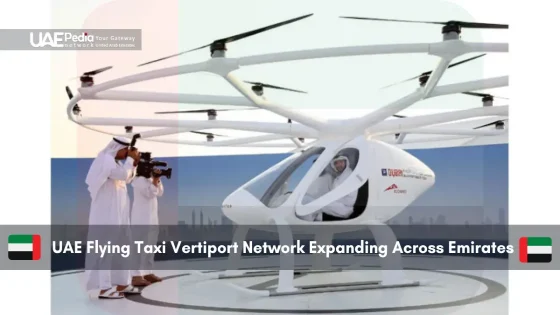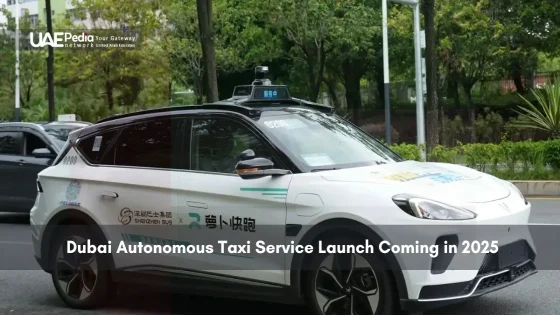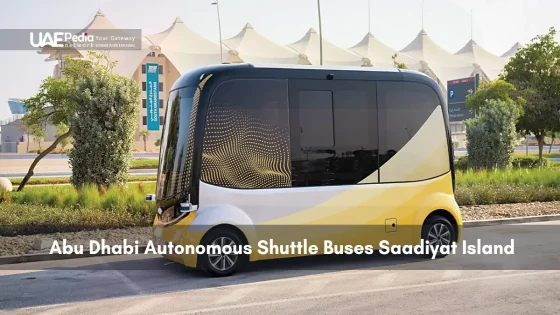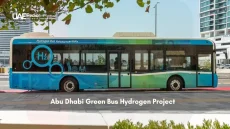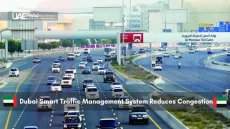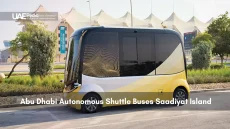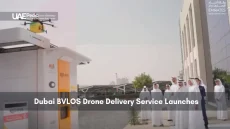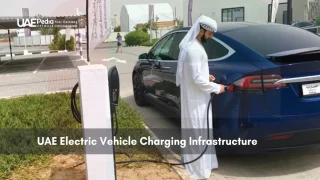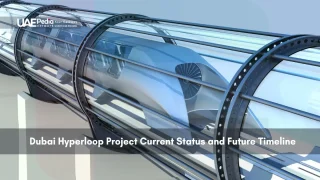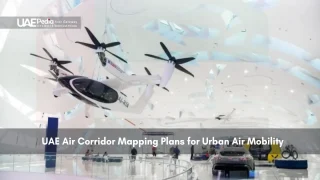What if your next trip across the city could skip traffic entirely—not by tunneling underground, but soaring above it? Construction crews are now laying the groundwork for a revolutionary transportation system at one of the world’s busiest hubs: Dubai International Airport. This marks the first step in a bold plan to connect neighborhoods through silent, emission-free aircraft designed for quick hops between rooftops and landmarks.
Leading this charge is Joby Aviation, whose electric vertical takeoff and landing (eVTOL) craft recently earned design approval from global regulators. Their collaboration with local authorities blends cutting-edge engineering with cultural awareness—like ensuring vertiports complement the Emirates’ iconic architecture. Early sites include Palm Jumeirah and Dubai Marina, with charging systems built for desert heat and sandstorms.
This isn’t sci-fi. By 2026, residents could board a pilot-operated air taxi at DXB and reach the Palm in 10 minutes—a journey that currently takes 45 by car. Safety remains paramount, with the Civil Aviation Authority setting strict standards for infrastructure and operations. From noise reduction to battery efficiency, every detail aims to earn public trust.
What you’ll discover:
- How vertiports will blend into existing transit hubs and tourist hotspots
- The technology ensuring these aircraft meet desert climate demands
- Exclusive insights into Joby’s six-year operational exclusivity deal
Innovative Developments in UAE Air Mobility
Imagine stepping off a plane and hopping into a sleek, silent aircraft for a quick ride to your hotel—no traffic, just sky. This vision is taking shape at Dubai International Airport, where a new vertiport will anchor the region’s air mobility network. Designed as a three-story hub, it connects directly to the Dubai Metro’s Emirates Station 2, creating a seamless transition between ground and air travel.
Strategic Location and Integration with Dubai International Airport
Placing the vertiport near the airport isn’t just convenient—it’s revolutionary. Travelers can switch from international flights to air taxis in minutes, bypassing congested highways. Key benefits include:
- Direct links to metro lines, buses, and ride-share zones
- Real-time baggage handling between aircraft and ground transport
- Climate-controlled lounges offering views of departing eVTOLs
Regulatory Milestones and Safety Standards
The General Civil Aviation Authority didn’t just approve this project—they redefined what’s possible. Their new vertiport regulations mandate:
“Triple-redundant navigation systems and emergency charging stations capable of withstanding 122°F desert heat.”
Joby Aviation’s technical design passed rigorous stress tests, earning the first-ever UAE certification for passenger-ready eVTOL operations. Collaborations with the transport authority ensure every landing pad and battery swap station meets global safety benchmarks. It’s not just about flying higher—it’s about building trust, one innovation at a time.
uae flying taxi vertiport network: Pioneering Advanced Air Mobility
Picture this: zipping from a rooftop lounge to a beachfront meeting in minutes—no honking, no detours, just clean energy propelling you forward. At the heart of this vision lies infrastructure so advanced, it feels borrowed from tomorrow. Take the Global Electric Aviation Charging System (GEACS), engineered to juice up aircraft batteries faster than your phone charges. These stations handle desert extremes, cooling components during 120°F summers while maintaining lightning-fast turnaround times.
State-of-the-Art Infrastructure and Charging Systems
GEACS isn’t just plug-and-play—it’s a ballet of precision. Each station uses smart sensors to monitor battery health mid-charge, adjusting power flow to prevent overheating. “We’re not building gas stations for helicopters,” says a Joby Aviation engineer. “This is high-frequency refueling designed for 90-second swaps between flights.” Stations will nestle into locations like Palm Jumeirah, blending into resorts and business hubs with sleek, solar-paneled canopies.
Partnerships with Industry Leaders and Technology Pioneers
Progress flies faster when giants collaborate. Skyports Infrastructure brings vertiport design expertise, while Joby’s aircraft undergo real-world testing in coastal winds. Together, they’ve crafted landing pads that double as art installations—think shaded groves with charging ports hidden beneath date palm motifs. Even the lounges whisper innovation: augmented reality windows show flight paths as you sip karak chai.
This synergy isn’t accidental. Weekly design sprints between engineers and Emirati architects ensure every bolt respects local aesthetics. The result? A network that feels less like transit and more like stepping into the future—one where the sky isn’t the limit, but the highway.
Industry Impact and Regulatory Progress
What if your daily travel could bypass highways and glide effortlessly between neighborhoods? This vision drives Joby Aviation’s partnership with the General Civil Aviation Authority—a collaboration reshaping how cities move. Together, they’re proving that aerial innovation thrives when private ambition meets public oversight.
Joby Aviation and the Collaborative Vision for Air Taxi Services
Joby Aviation isn’t just building aircraft—they’re crafting an ecosystem. Their six-year exclusivity deal with local authorities creates a blueprint for scalable air taxi operations. “We’re blending Silicon Valley speed with Emirates-scale ambition,” says Duncan Walker of Skyports Infrastructure, a key partner in vertiport design.
Consider these breakthroughs:
- Battery swap systems tested in California’s Mojave Desert, now adapted for Gulf humidity
- Real-time flight data shared between pilots and the transport authority
- Noise levels quieter than a dishwasher—critical for urban acceptance
Adapting Global Aviation Practices to UAE Vertiport Regulations
Saif Mohammed Al Suwaidi, Director General of the GCAA, puts it plainly:
“Safety isn’t negotiable. Our rules borrow from Tokyo’s drone corridors and London’s helipad codes—then add desert-proof layers.”
The result? A regulatory framework that’s both global and local:
| Global Standard | UAE Adaptation | Benefit |
|---|---|---|
| 15-minute emergency response | 8-minute target with sandstorm protocols | Enhanced reliability |
| Standard charging stations | Solar-cooled GEACS units | 45% faster turnover |
| Basic noise limits | Strict 60 dB cap near residential zones | Community-friendly ops |
This synergy between global expertise and regional needs is why the first vertiport near Dubai isn’t just a pilot project—it’s a template for the world.
Reflections on a Transformative Future in Urban Air Mobility
The skyline of tomorrow is being sketched today—not with pencils, but with propellers. From the first air taxi facility near Dubai International to desert-tested charging systems, this project reimagines how cities move. It’s a story of collaboration: engineers tweaking battery design under palm trees, regulators crafting heat-resistant safety protocols, and CEOs betting big on silent skies.
By 2026, these efforts could let you swap rush-hour gridlock for breezy rooftop takeoffs. But the real magic lies beyond schedules and specs. It’s about infrastructure that respects both innovation and heritage—charging stations shaped like sand dunes, flight paths avoiding cultural landmarks. As one Joby Aviation leader notes, “We’re not just building routes. We’re weaving new threads into the Emirates’ story.”
What’s next? More facilities near business hubs and resorts, plus smarter aircraft that learn from desert winds. Yet success hinges on keeping that spark alive—the balance between bold aviation leaps and grounded community trust. So keep your eyes up. The future isn’t just flying. It’s soaring, one thoughtful innovation at a time.
Initial vertiport sites include strategic areas near Dubai International Airport and iconic locations like Palm Jumeirah, designed to seamlessly connect air taxis with existing transport hubs while minimizing urban disruption.
Vertiports near Dubai International will feature synchronized flight paths and shared airspace management systems, allowing air taxis to complement traditional aviation without compromising safety or efficiency.
The General Civil Aviation Authority mandates rigorous certification processes, real-time traffic monitoring, and emergency protocols aligned with global standards—ensuring operations meet or exceed international aviation safety benchmarks.
Charging hubs use rapid battery-swap technology and solar-powered energy grids, enabling quick turnaround times while adhering to the UAE’s Net Zero 2050 sustainability goals.
Joby Aviation and Skyports Infrastructure lead the charge, collaborating with Dubai’s RTA and GCAA to design vertiports, refine regulations, and test systems tailored to the region’s climate and urban landscape.
The GCAA has adapted FAA and EASA frameworks to local needs—prioritizing sandstorm resilience, heat-tolerant materials, and noise reduction—while maintaining interoperability with international air mobility ecosystems.
Absolutely! Architects are blending futuristic functionality with traditional motifs—think wind-tower-inspired ventilation and majlis-inspired waiting areas—to create spaces that feel both cutting-edge and authentically local.
By slashing cross-city travel times to minutes and reducing road congestion, these electric aircraft promise to reshape daily commutes while positioning the UAE as a global leader in smart urban mobility solutions.
